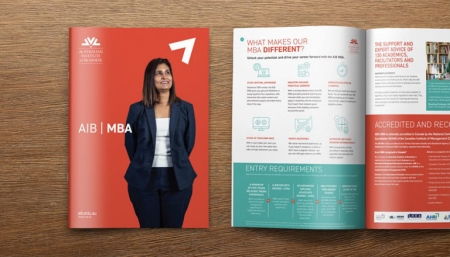Powerful body language tips to help exude confidence

Your body language plays a crucial role in how others perceive you, and it’s crucially important in professional settings. While we primarily focus on what we will say when meeting a new client, interviewing for a new job or planning a presentation, our nonverbal cues can be the difference between success and defeat. While the data isn’t beyond dispute, the most famous formulation has it that communication is 55% body language, 38% tone of voice and a mere 7% the actual words. With that in mind, here are our top tips to help you convey self-confidence and authority through the most powerful communication tool at your disposal – your body!
Maintain your posture
Were you told to stand up straight as child? There’s a reason for that – strong posture makes you look confident. Stand tall and straight with your shoulders back, neck elongated and legs slightly apart. If you’re sitting down, keep both feet on the floor. Not only will this project the outward image of strength and vitality, it’ll help you feel that way as well: good posture allows good blood flow through the body and wakes up the brain.
Strong leaders convey their self-confidence and strength subtly but clearly through their posture. By ensuring your posture is positive in presentations or meetings, you can boost your confidence and subconsciously tell the audience you’re in control and certain about whatever you’re delivering.
A smile goes a long way
The simple and humble smile can have a powerful effect on us and others in the room. Smiling triggers “feel good” hormones like serotonin, dopamine and endorphins. These powerful chemicals relax your body, reduce your heart rate and blood pressure, and help you fight off stress. This makes you feel healthier and appear more confident, stimulating your own sense of well-being. It also indicates to those around you that you are approachable and trustworthy, breaking down barriers for meaningful communication.
And most importantly, a simple smile can make someone else’s day.
Make eye contact
Eye contact is one of the most powerful forms of nonverbal communication. When you’re talking, eye contact helps you grab attention, and when you’re listening, it indicates that you’re engaged and interested in what’s being said. It projects professionalism and a sense of confidence that is so important across all facets of life.
Can you hold eye contact for too long though? Yes, you can. Between 3 and 5 seconds is perfect before looking away to process or gather your next thought.
Practice your handshake
In Western cultures, the handshake is the most appropriate and common form of physical contact utilised in a business setting. It can leave a lasting impression, either positive or negative, depending on whether you get it right. A clammy handshake conveys nervousness, but an overly vigorous one suggests overcompensation. Let it go on too long and your companion’s lasting memory of you will be an awkward one.
The perfect handshake should be brief, with a firm medium grip. Maintain eye contact while you shake hands, and smile in acknowledgment of the connection. For men and women alike, a good handshake conveys confidence and strength, and can give you the instant credibility you need to turn a new connection into a meaningful relationship.
Don’t fidget
Hand gestures are an inescapable part of communication, but if you can’t keep your hands still while you’re talking, it detracts from your message. Watch videos of great orators and note how they use their hands; the best speakers do so very sparingly, letting their words do the work.
Fidgeting can imply nervousness which will detract from the confident persona you are trying to portray. So if you’re prone to fidgeting, whether with your hair, your phone or tapping a foot, practise some other gestures to compensate. A good one is to steeple your fingers together as your hands rest before you, giving them contact with one another that will restrain them from fidgeting. A calm body projects confidence along with capturing attention where you want it to be: on your words.
What do you think?
Anyone can learn to harness powerful body language with a bit of practice. How have you improved your body language to exude confidence? Which changes have had the biggest impact on your confidence?
READ: 8 Powerful Tips for Speaking With Confidence and Authority
This article was written by Tanya Ashworth-Keppel and Jelena Milutinovic on behalf of the Australian Institute of Business. All opinions are that of the writer and do not necessarily reflect the opinion of AIB. The following sources were used to compile this article: CNBC; Forbes; Inc. and The Huffington Post, Speaking About Presenting, Chron,
Image credit: LinkedIn




